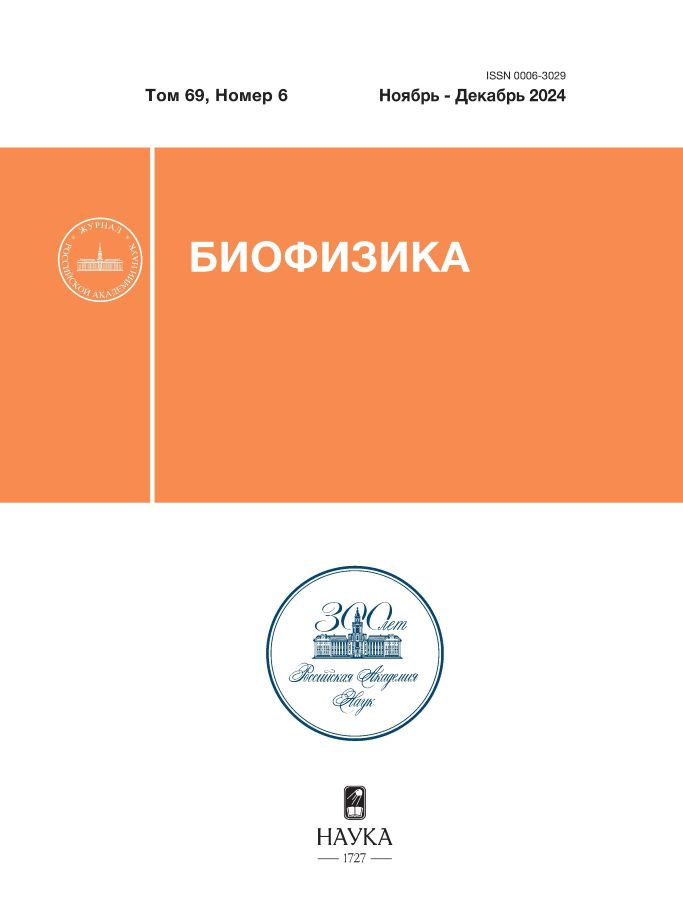Nitrosonium Cation as an Antitumor Component of Dinitrosyl Iron Complexes with Thiol-Containing Ligands
- Авторлар: Vanin A.F1, Ostrovskaya L.A2, Korman D.B2, Rykova V.A2, Bluhterova N.V2, Fomina M.M2, Mikoyan V.D1, Tkachev N.A1
-
Мекемелер:
- N.N. Semenov Federal Research Center of Chemical Physics
- N.M. Emanuel Institute of Biochemical Physics, Russian Academy of Sciences
- Шығарылым: Том 69, № 6 (2024)
- Беттер: 1382-1389
- Бөлім: Medical biophysics
- URL: https://rjonco.com/0006-3029/article/view/676190
- DOI: https://doi.org/10.31857/S0006302924060231
- EDN: https://elibrary.ru/NJJOIL
- ID: 676190
Дәйексөз келтіру
Аннотация
Авторлар туралы
A. Vanin
N.N. Semenov Federal Research Center of Chemical Physics
Email: vanin.dnic@gmail.com
Moscow, Russia
L. Ostrovskaya
N.M. Emanuel Institute of Biochemical Physics, Russian Academy of Sciences
Email: larros@list.ru
Moscow, Russia
D. Korman
N.M. Emanuel Institute of Biochemical Physics, Russian Academy of SciencesMoscow, Russia
V. Rykova
N.M. Emanuel Institute of Biochemical Physics, Russian Academy of SciencesMoscow, Russia
N. Bluhterova
N.M. Emanuel Institute of Biochemical Physics, Russian Academy of SciencesMoscow, Russia
M. Fomina
N.M. Emanuel Institute of Biochemical Physics, Russian Academy of SciencesMoscow, Russia
V. Mikoyan
N.N. Semenov Federal Research Center of Chemical PhysicsMoscow, Russia
N. Tkachev
N.N. Semenov Federal Research Center of Chemical PhysicsMoscow, Russia
Әдебиет тізімі
- Borodulin R. R., Kubrina L. N., Mikoyan V. D. Poltorakov A. P., Shvydkiy V. O., Burbaev D. Sh., Serezhenkov V. A., Yakhontova E. R., and Vanin A. F. Dinitrosyl iron complexes with glutathione as NO and NO+ donors. Nitric Oxide, 29, 4—16 (2013). doi: 10.1016/j.niox.2012.11.001
- Vanin A. F., Tronov V. A., and Borodulin R. R. Nitrosonium cation as a cytotoxic component of dinitrosyl iron complexes with thiol-containing ligands (based on the experimental work on MCF-7 hyman breast cancer cell culture). Cell Biochem. Biophys., 79 (1), 93-102 (2021). doi: 10.1007/s12013-020-00962-x
- Галаган М. Е., Орановская Е. В., Мордвинцев П. И., Медведев О. С. и Ванин А. Ф. Гипотенизивный эффект динитрозильных комплексов железа на бодрствующих животных. Бюл. Всесоюз. кардиол. центра, 2, 75-79 (1988).
- Ванин А.Ф., Телегина Д.И., Микоян В.Д., Ткачев Н.А., Васильева С.В. Цитостатическое действие динитрозильных комплексов железа с глутатионом на клетки Escherichia coli определяется катионами нитрозония, высвобождающимися из этих комплексов. Биофизика, 67, 938-946 (2022). doi: 10.31857/S0006302922050106
- Шиповалов А. В., Ванин А. Ф., Пьянков О. В., Багрянская Е. Г., Микоян В. Д. и Попкова В. Я. Противовирусная активность катионов нитрозония в отношении SARS-CoV-2 на модели сирийского хомячка. Биофизика, 67 (5), 969-981 (2022). doi: 10.31857/S0006302922050167
- Ванин А. Ф., Островская Л. А., Корман Д. Б., Блюхтерова Н. В., Рыкова В. А. и Фомина М. М. Роль катиона нитрозония в механизме противоопухолевого эффекта препаратов динитрозильных комплексов железа. Биофизика, 67 (5), 982-990 (2022). doi: 10.31857/S0006302922050179
- Borodulin R. R., Kubrina L. N., Shvydkiy V. O., Lakomkin V. L., and Vanin A. F. A simple protocol for the synthesis of dinitrosyl iron complexes with glutathione: EPR, optical, chromatographic and biological characterization of reaction products. Nitric Oxide, 35, 110-115 (2013). doi: 10.1016/j.niox.2013.08.007
- Vanin A. F., Poltorakov A. P., Mikoyan V. D., Kubrina L. N., and Burbaev D. S. Polynuclear water-soluble dinitrosyl iron complexes with cysteine or glutathione ligands: electron paramagnetic resonance and optical studies. Nitric Oxide, 23, 136-149 (2010). doi: 10.1016/j.niox.2010.05.285
- Трещалина Е. М., Жукова О. С., и Герасимова Г. К. В кн. Руководство по проведению доклинических исследований лекарственных средств. Под ред. А. Н. Миронова (Изд-во «Грин и К», 2012), ч. 1, сс. 642657.
- Emanuel N. M., Saprin A. N., Shabalkin V. A., Kozlova L. E., and Kruglyakova K. E. Detection and investigation of a new type of ESR signal characteristic of some tumour tissues. Nature, 222 (5189), 165-167 (1969). doi: 10.1038/222165a0
- Ignarro L. J. Nitric Oxide: Biology and Pharmacology (Acad. Press, San Diego, USA, 2000).
- Ванин А. Ф., Блюменфельд Л. А. и Четвериков А. Г. Исследование комплексов негемового железа в клетках и тканях методом ЭПР. Биофизика, 12, 829841 (1967).
- Ванин А. Ф. Динитрозильные комплексы железа с тиолсодержащими лигандами. Физико-химия, биология, медицина (Институт компьютерных исследований, Москва-Ижевск, 2015).
- Vanin A. F., Serezhenkov V. A., Mikoyan V. D., and Genkin M. V. The 2.03 signal as an indicator of dinitrosyl-iron complexes with thiol-containing ligands. Nitric Oxide, 2, 224-234 (1998). doi: 10.1006/niox.1998.0180
Қосымша файлдар









